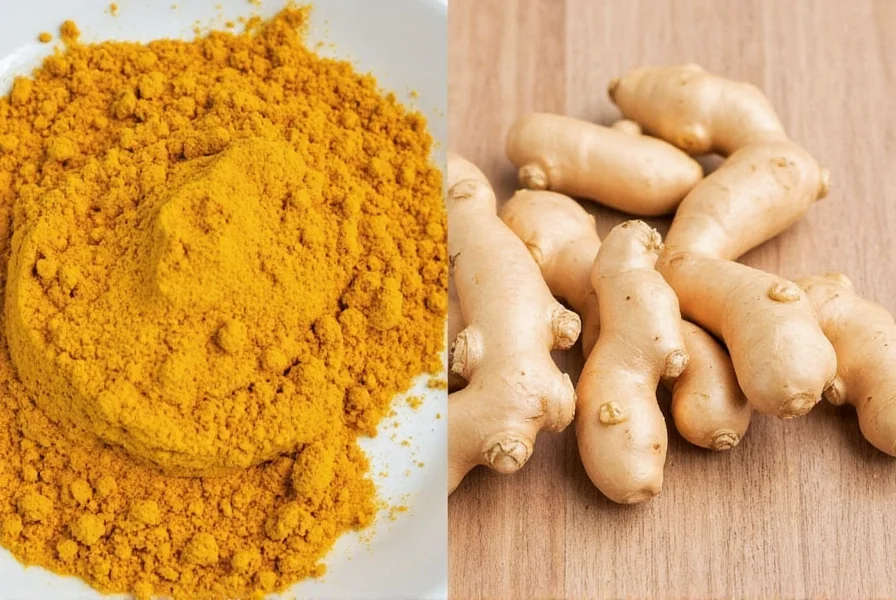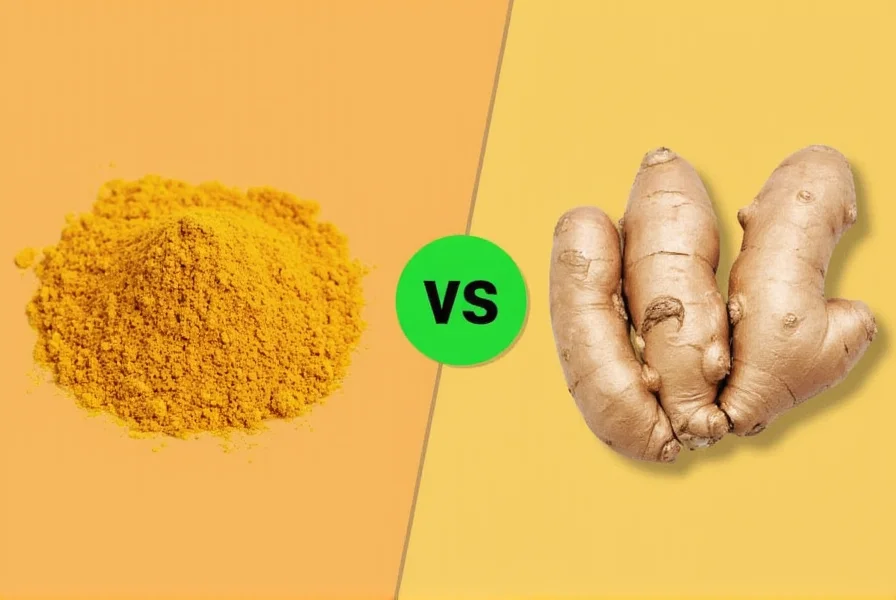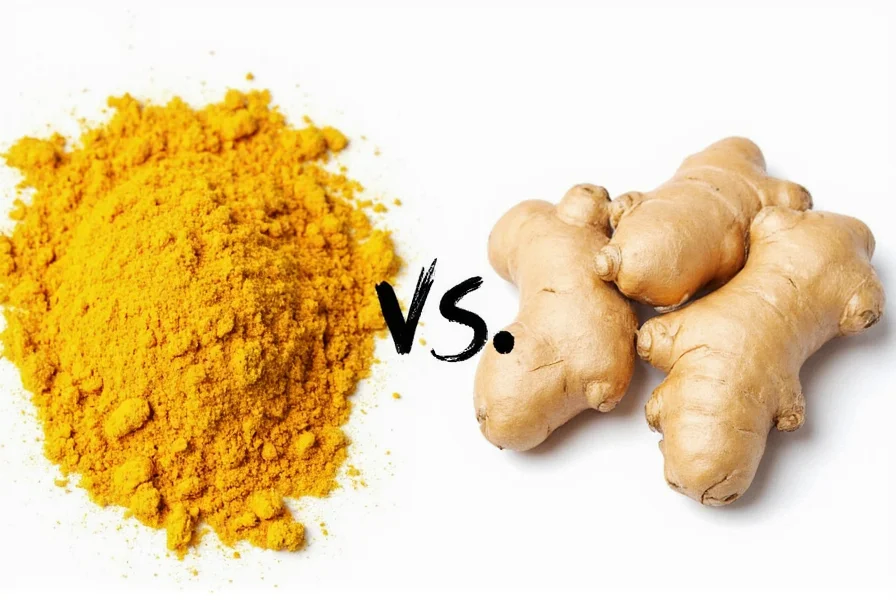When comparing turmeric and ginger health benefits, it's important to understand their distinct properties and evidence-based applications. These ancient spices have gained modern scientific validation for specific health conditions, though their mechanisms and effectiveness differ significantly.
Nutritional Profiles Compared
While both belong to the Zingiberaceae family, turmeric (Curcuma longa) and ginger (Zingiber officinale) have unique nutritional compositions. Turmeric's primary active compound is curcumin, making up about 2-8% of the root, while ginger contains 0.5-7.5% gingerol. Understanding these differences between turmeric and ginger helps determine which might be more appropriate for specific health concerns.
| Compound | Turmeric | Ginger |
|---|---|---|
| Primary Active Compound | Curcumin (2-8%) | Gingerol (0.5-7.5%) |
| Anti-inflammatory Properties | Strong (NF-kB inhibition) | Moderate (COX-2 inhibition) |
| Digestive Benefits | Moderate | Strong (gastric motility) |
| Bioavailability Enhancement | Requires piperine (black pepper) | Natural absorption |
Scientific Evidence for Health Benefits
Research on turmeric for inflammation reduction shows promising results. A 2017 review in Food Science & Nutrition found curcumin comparable to some anti-inflammatory medications for certain conditions, though with fewer side effects. However, curcumin's poor bioavailability means effective doses typically require standardized extracts with piperine.
For ginger and digestive health, substantial evidence exists. A 2020 meta-analysis in Nutrients confirmed ginger's effectiveness for nausea relief, particularly for pregnancy-related nausea and chemotherapy-induced symptoms. The recommended dose for nausea is 1-1.5 grams of ginger powder daily.

Practical Applications and Usage
When incorporating these spices into your routine, understanding the best way to consume turmeric and ginger matters. For turmeric, combine 1 teaspoon of powder with black pepper and healthy fat (like coconut oil) to boost absorption by up to 2000%. Ginger can be consumed fresh, dried, or as tea, with 2-4 grams daily being the typical therapeutic range.
The turmeric ginger tea benefits combine both spices' properties. To prepare: simmer 1 inch of fresh turmeric, 1 inch of fresh ginger, and a pinch of black pepper in 2 cups of water for 15 minutes. This preparation maximizes the bioactive compounds while providing synergistic effects for immune support and digestion.
Safety Considerations
Both spices are generally safe when consumed in food amounts, but therapeutic doses require caution. Turmeric and ginger side effects may include:
- Turmeric: May interact with blood thinners, cause digestive upset in high doses
- Ginger: May increase bleeding risk, lower blood sugar, cause heartburn
People taking anticoagulants should consult their healthcare provider before using either spice medicinally. Pregnant women should limit ginger to 1 gram daily without medical supervision.

Evidence-Based Recommendations
Based on current research, here's when to consider each spice:
- Choose turmeric for chronic inflammatory conditions like arthritis when combined with piperine
- Choose ginger for acute digestive issues, motion sickness, or nausea relief
- Combine both for general immune support and antioxidant benefits
Remember that while these spices offer health benefits, they're not substitutes for medical treatment. The scientific evidence for turmeric benefits continues to grow, but more large-scale human trials are needed for definitive conclusions about optimal dosing and long-term effects.
Frequently Asked Questions
Can I take turmeric and ginger together daily?
Yes, taking turmeric and ginger together is generally safe for most people at culinary doses (1-3 grams combined daily). However, if using therapeutic doses (curcumin supplements plus ginger supplements), consult your healthcare provider, especially if you take blood thinners or have gallbladder issues.
Which is better for inflammation: turmeric or ginger?
Turmeric (specifically curcumin) shows stronger anti-inflammatory effects in scientific studies compared to ginger. Research indicates curcumin inhibits multiple inflammation pathways more effectively, but requires black pepper for proper absorption. Ginger provides moderate anti-inflammatory benefits with better natural bioavailability.
How long does it take for turmeric to reduce inflammation?
Most studies show noticeable anti-inflammatory effects from standardized curcumin supplements (with piperine) within 4-8 weeks of consistent use at doses of 500-1500mg daily. Food-based turmeric consumption may take longer to show effects due to lower curcumin concentration and bioavailability.
Does ginger interfere with medications like turmeric does?
Yes, ginger can interact with certain medications, particularly blood thinners (like warfarin), diabetes medications, and blood pressure drugs. While turmeric has more documented interactions with anticoagulants, both spices affect blood clotting and should be used cautiously with these medications.
What's the best time to take turmeric and ginger?
For digestive benefits, take ginger 30 minutes before meals. Turmeric is best taken with food containing healthy fats to enhance absorption. Many people find taking both in the morning with breakfast provides sustained benefits throughout the day without causing digestive upset.











 浙公网安备
33010002000092号
浙公网安备
33010002000092号 浙B2-20120091-4
浙B2-20120091-4